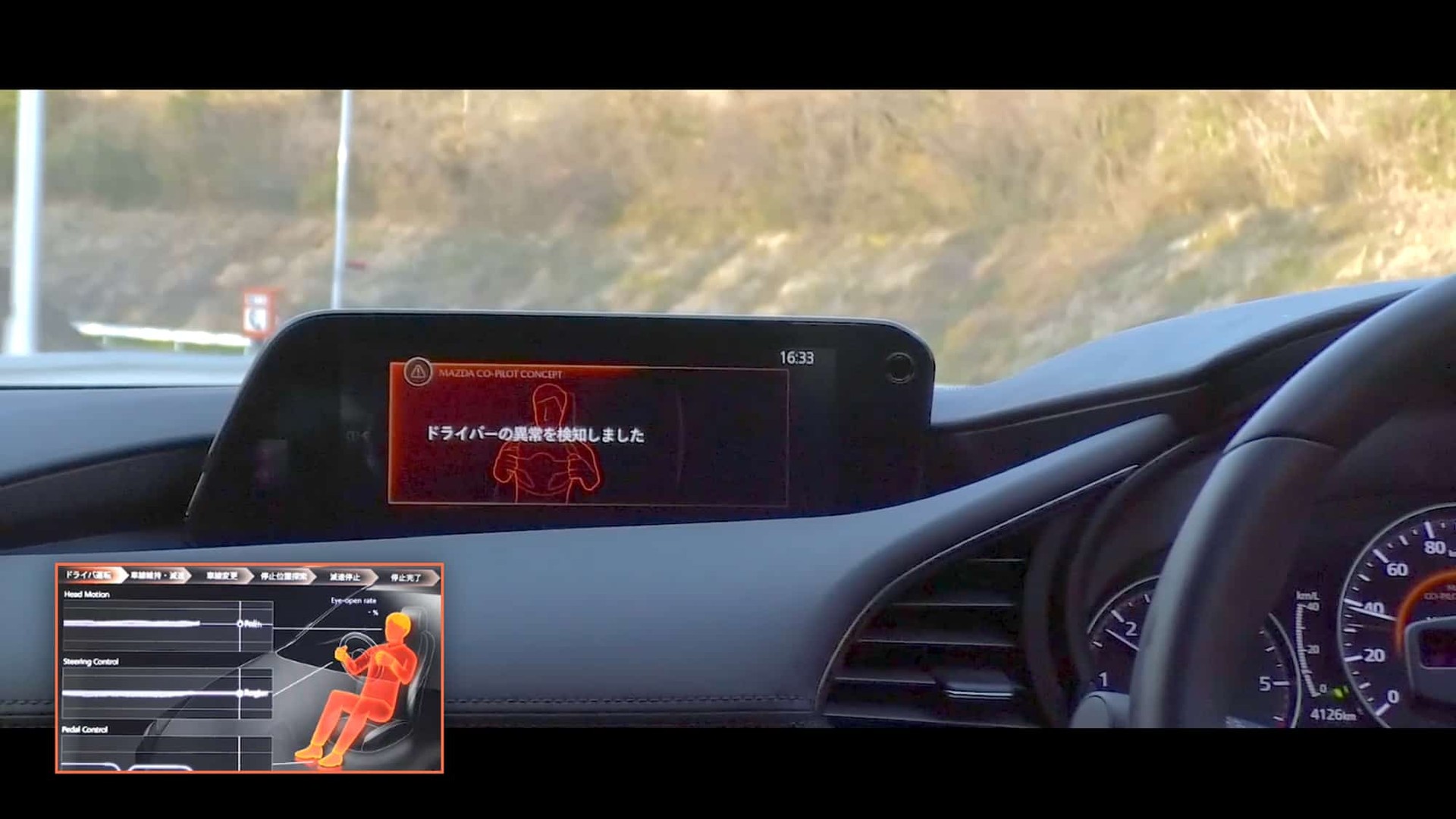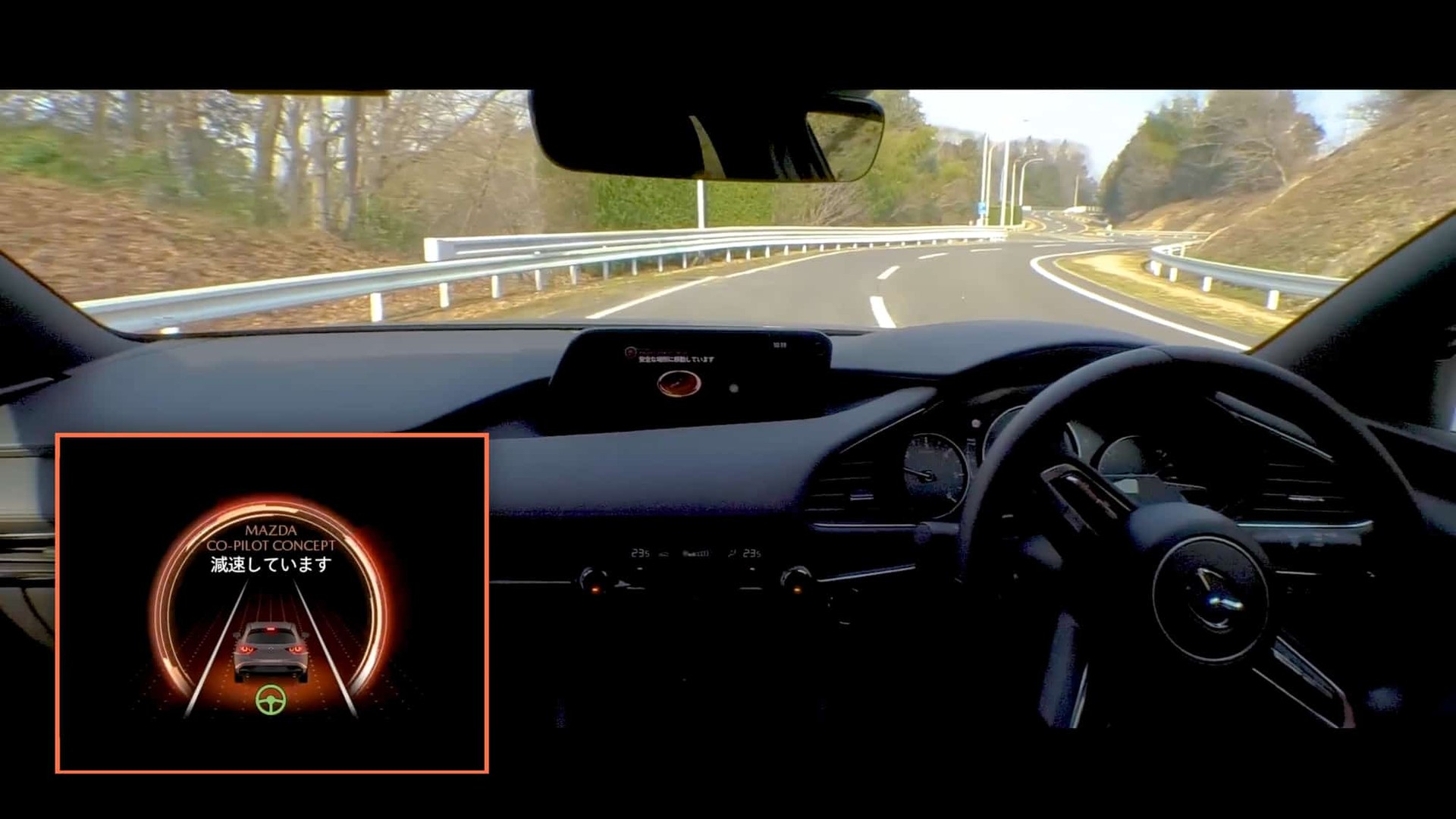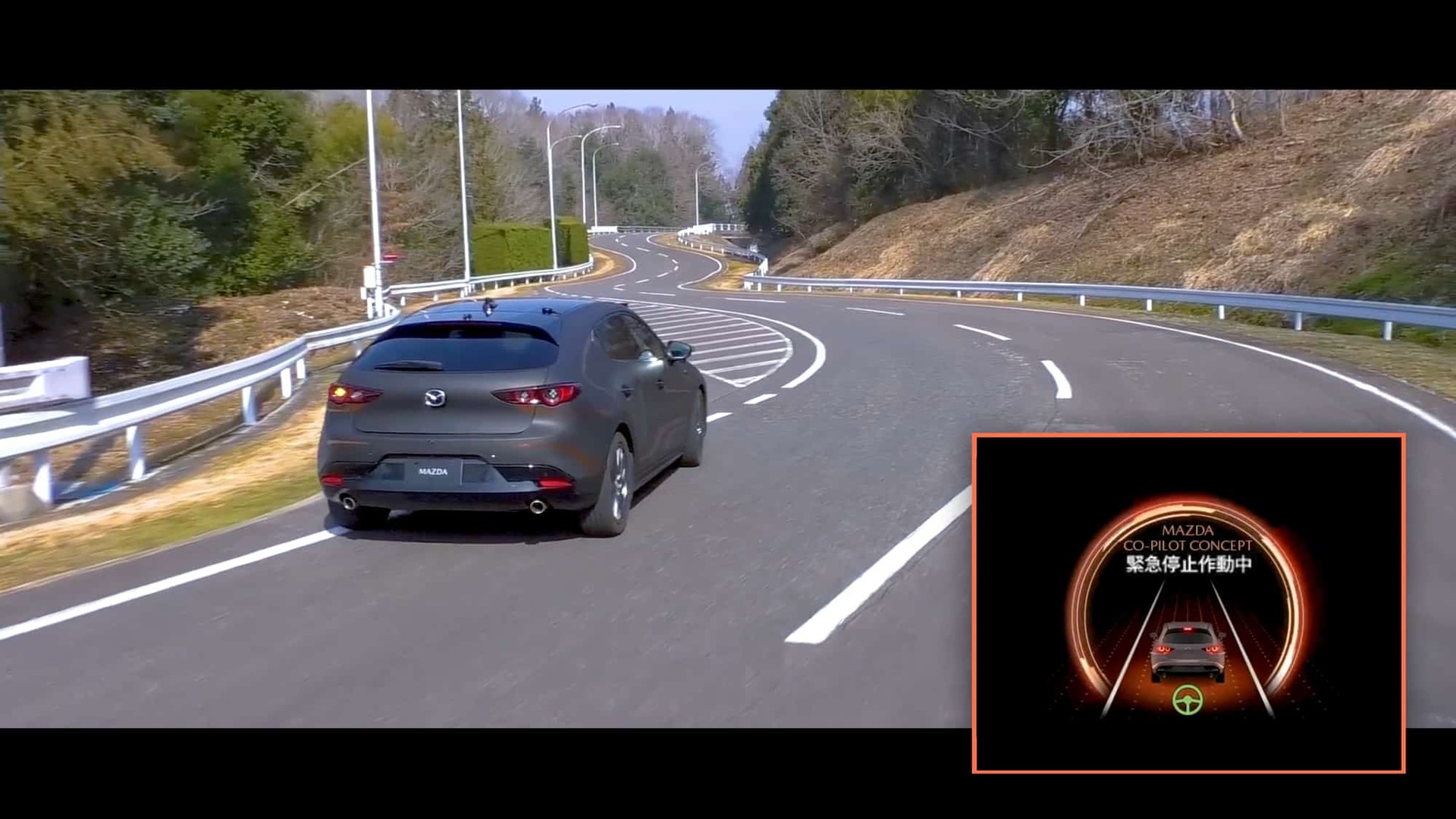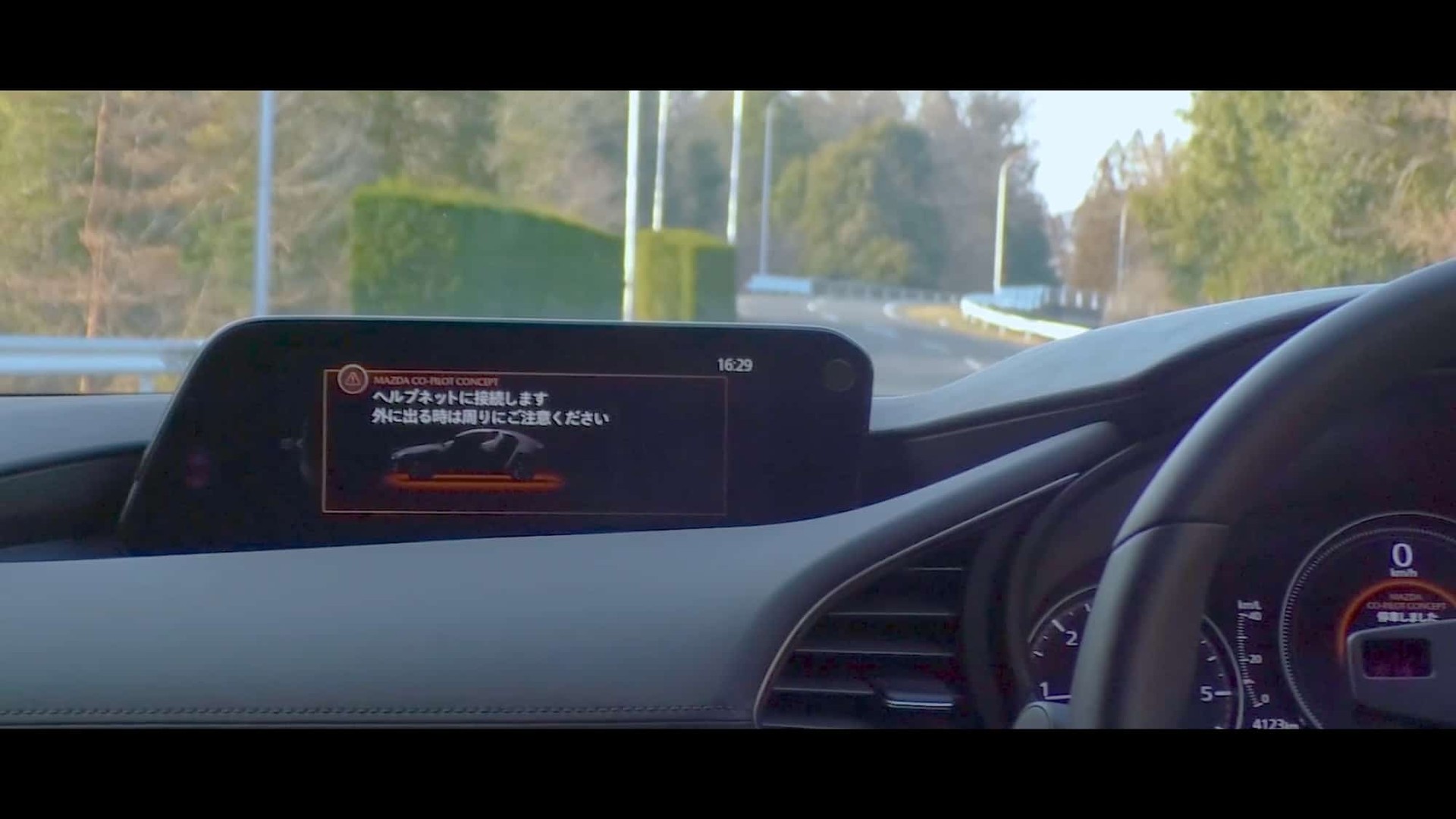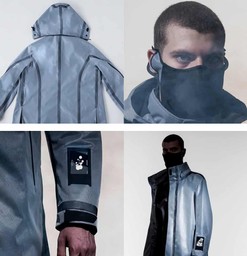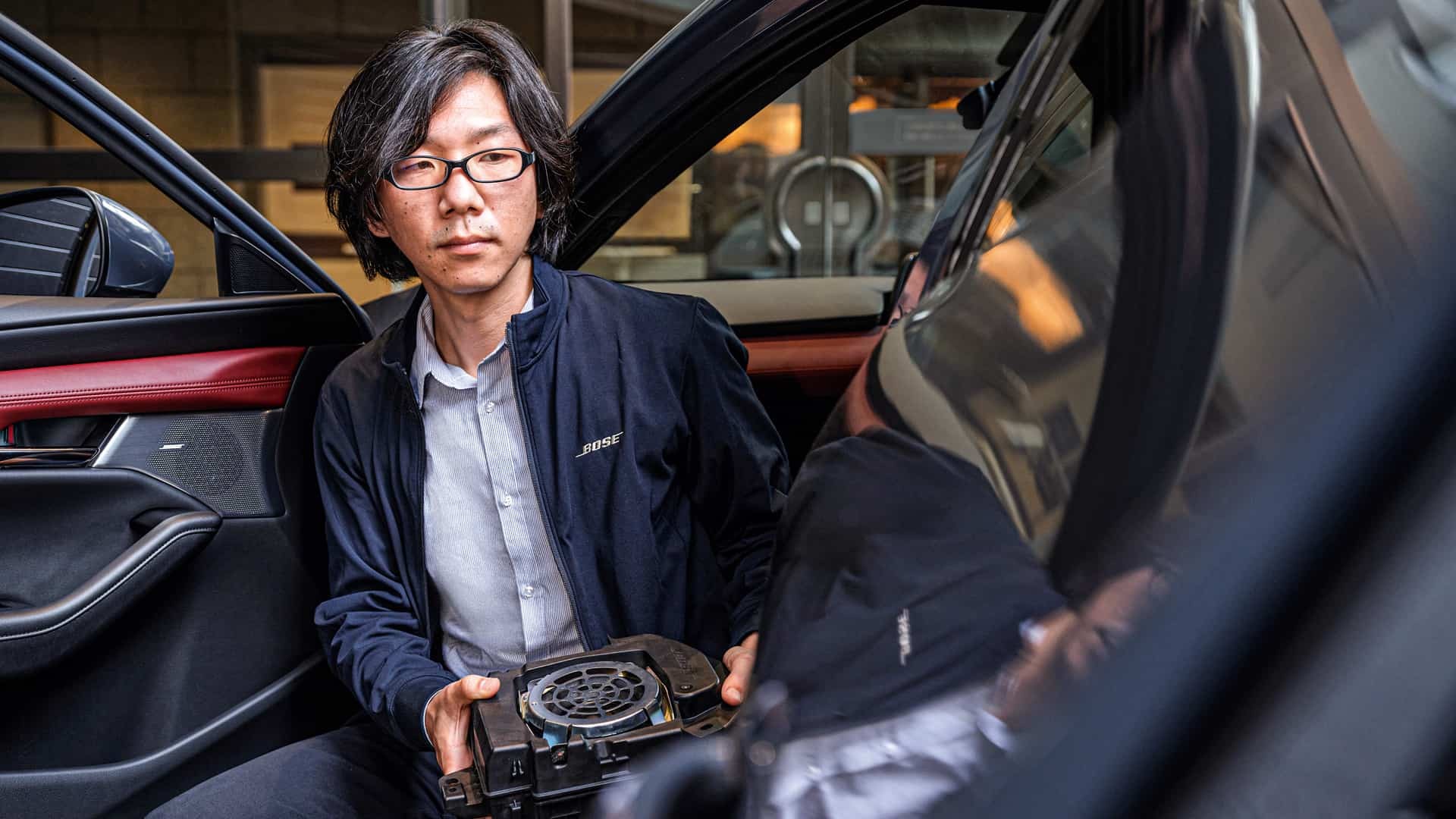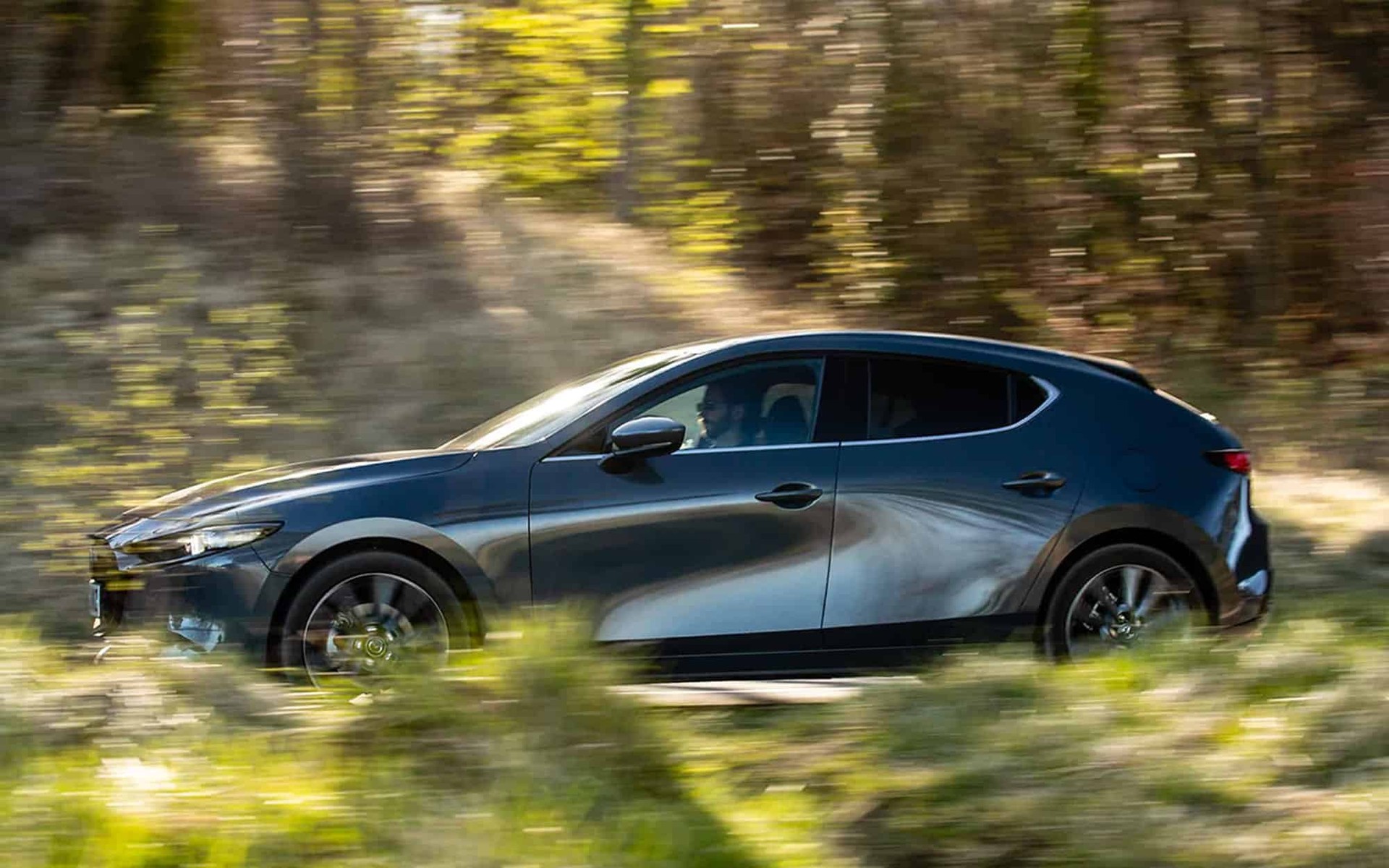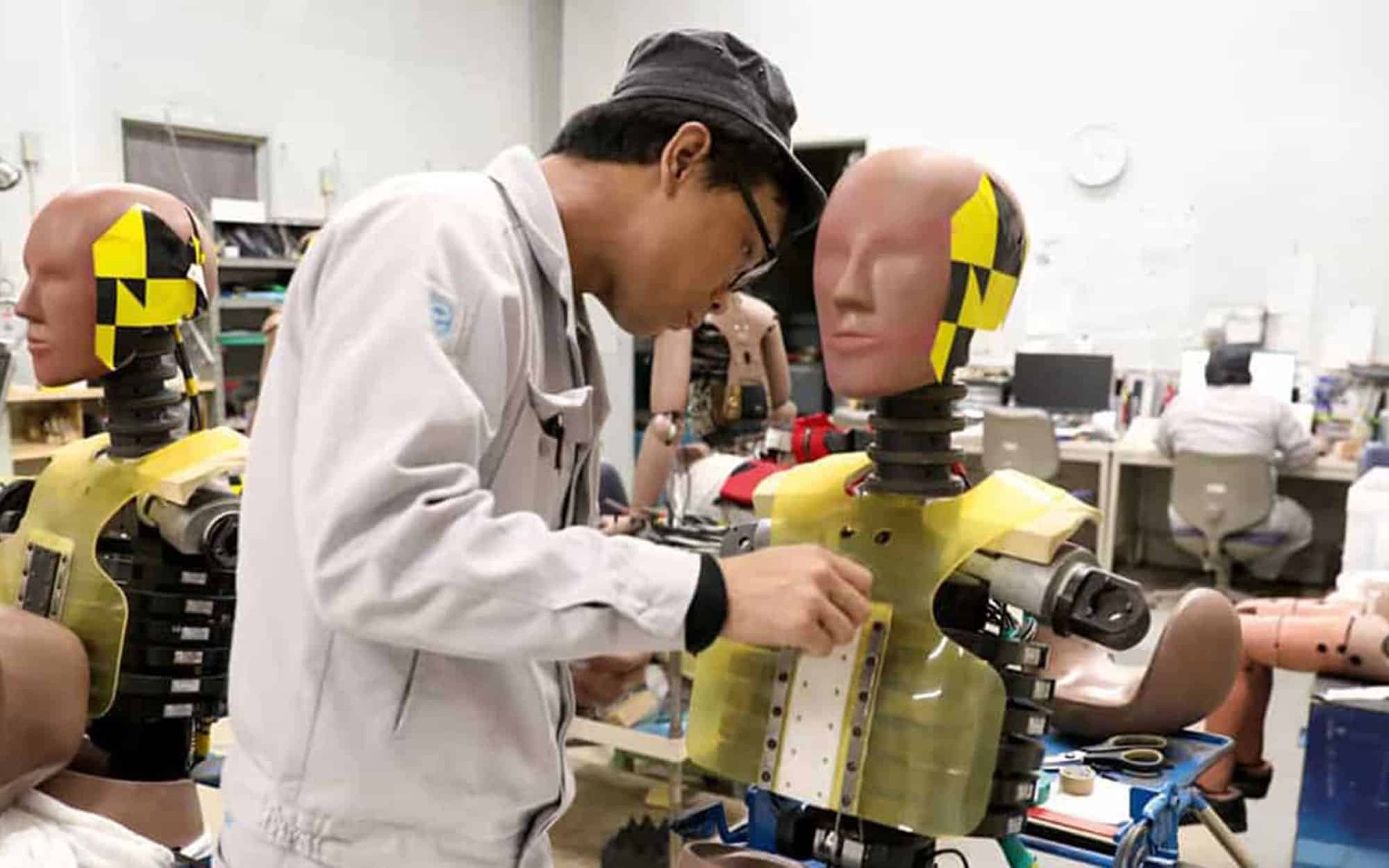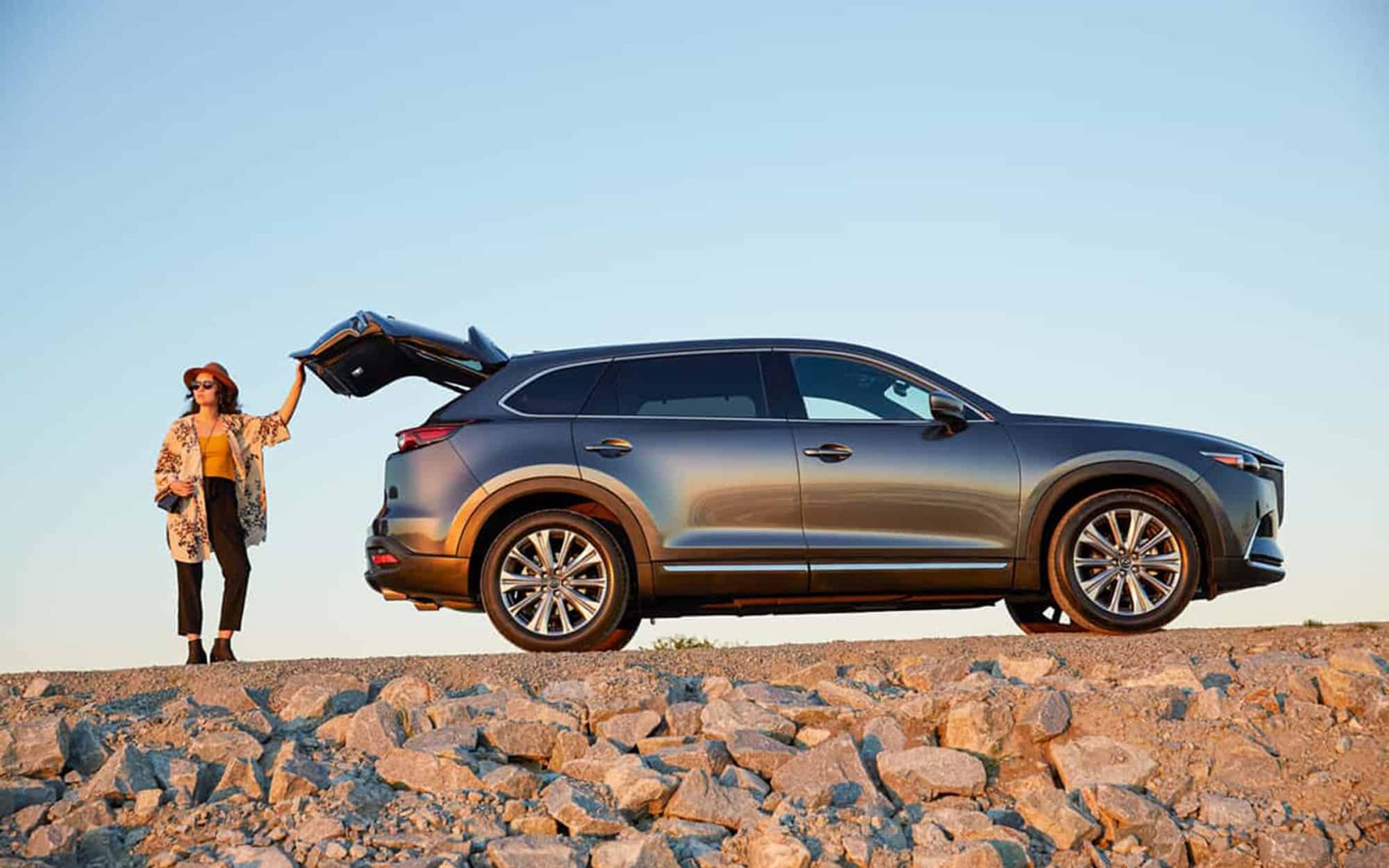INNOVATE
A safe place for everyone
Mazda Stories highlights some of Mazda’s award-winning safety systems and we take a look at some ingenious technologies from around the world designed for cyclists, bikers and pedestrians too.
4 minute read
Mazda’s attitude to safety goes beyond just protecting drivers and occupants of its own vehicles. Its approach encompasses an awareness of all road users’ welfare.
Thanks to Mazda’s Traffic Sign Recognition System (shown above), drivers are made more aware of traffic signs and changes in speed. The system detects and reads road signs—“stop” and “do not enter” for example—and local speed limits using the car’s Forward Sensing Camera, alerting the driver via the car’s Active Driving Display. If you happen to be going too fast, the Active Driving Display will project the recognized speed limit sign on your windshield, as well as flashing an amber light and then emitting a warning sound, encouraging you to slow down. Think of this system as another pair of eyes on the road, helping you to recognize any potential hazards while keeping you safe.
Mazda MX-30’s safe battery pack
An electric vehicle poses different safety challenges compared to vehicles with an internal combustion engine. From the heftiness of a battery pack to the risk of ignition, the Mazda MX‑30 EV required a completely new approach. Mazda’s engineers installed a system that shuts off the power supply the moment a collision is detected. In addition, the battery is covered with a case made of high-strength material and surrounded by a stronger body skeleton. By protecting the battery with these components, the vehicle occupants are safeguarded from secondary damage that could be caused by high voltage in the event of a crash.
“The 2021 Mazda3 sedan and hatchback, Mazda6 sedan, Mazda CX‑3, Mazda CX‑30, Mazda CX‑5 and Mazda CX‑9 models have all been rated Top Safety Pick+ by the American IIHS.”
IIHS (Insurance Institute for Highway Safety)
Mazda’s Smart Brake Support
Mazda’s ingenious Smart Brake Support System (SBS) helps drivers to avoid or reduce accidents by automatically applying the brake if there is a danger of collision. Using a radar sensor installed behind the car’s grille, SBS is capable of detecting vehicles and obstacles as far as 200 metres ahead. When a risk of collision is detected, the system slows the car via a two-stage brake operation. The brakes are primed for maximum stopping power when the driver steps on the pedal, while automatic emergency braking is activated if the driver fails to respond, stopping the car before impact or slowing it down to reduce the effects of an imminent collision. SBS is the next step beyond Mazda’s low-speed Smart City Brake Support (SCBS) system, operating at speeds between 16 km/h and 145 km/h.
“As of 2020, 11 Mazda models have been given a five-star ANCAP safety rating.”
ANCAP (Australasian New Car Assessment Program)
Mazda’s lighting safety tech
A suite of Mazda lighting technologies ensures you’ll be able to see further ahead and be more visible to other drivers at night. Mazda’s Adaptive Front-lighting System (AFS) automatically points the low-beam headlights in the direction the driver intends to travel. Thanks to discharge headlights, the system illuminates a greater distance ahead compared to halogen headlights, improving the driver’s field of vision and visibility around curves and at intersections.
Additionally, High Beam Control (HBC) detects oncoming and preceding vehicles, and automatically switches between high and low beams during night driving. This makes it easier for the driver to recognize hazards, while Adaptive LED Headlights (ALH) light up the road ahead as if it were daytime. The system increases visibility at night to help you stay vigilant by combining three technologies: glare-free high beams, which automatically dim part of the illuminated area to avoid dazzling other drivers; wide-range low beams, which light up a wider area at low speeds; and highway mode, which helps you see further when travelling at speed.
“Mazda’s all-new MX-30 is the latest vehicle in its lineup to receive a five-star Euro NCAP rating.”
Euro NCAP (European New Car Assessment Programme)
Mazda’s future safety technology: Co-Pilot Concept
Mazda is developing the Mazda Co-Pilot Concept, which is a human-centric autonomous driving system. The system continuously monitors the driver’s physical condition and, if it detects any sudden change, will switch the car to autonomous driving. This brings the car to a safe place and stops it, and then places an emergency call. While many manufacturers are heading towards a fully autonomous future, there are no plans for the Co-Pilot Concept to totally automate the driving experience. Rather it will allow you to enjoy the drive but maintain peace of mind should an emergency arise. Mazda plans to start introducing the Mazda Co-Pilot 1.0 into its vehicles from 2022*.
Mazda Co-Pilot Concept aims to make driving safer, without detracting from the driving experience. Early imagery of the system in action in the test car (above). Recognizing the driver has fallen ill, it automatically takes control and safely pulls to a stop at the side of the road.
Innovative safety technology around the world
Hövding’s airbag for cyclists
Swedish safety technology company Hövding’s unique airbag technology protects cyclists up to 80 per cent more than traditional bicycle helmets. Hövding’s urban cyclist airbag sits around your neck like a collar, reading the wearer’s movements 200 times a second. In the event of an accident, it deploys in 0.1 second, protecting the head. The accident detection system’s algorithm is based on AI, fed by data which corresponds to both accidents and non-accidents. This data has been created by collecting the movement patterns from over 3,000 staged accidents of different types and intensity, simulated by professional stunt performers. In addition, over 2,000 hours of non-accident data has been collected by 300 regular cyclists. The resulting system allows you to ride safely, while avoiding helmet hair.
Spidi’s motorcycle jacket that warns of pollution
Urban motorcyclists are exposed to 100 times more pollution than car drivers. That’s why Italian motorcycle clothing company Spidi developed the Mission Beta Concept jacket. It features an integrated sensor that detects levels of air pollution while the rider is on the move. If pollution levels are too high, a sleeve-mounted display tells the rider to don the jacket’s integrated anti-contamination mask, which is compatible with any helmet.
Umbrellium’s smart Starling Crossing
Back in 2017, British design and engineering company Umbrellium created the Starling Crossing prototype (pictured). It set out to react in real time to different road conditions, making pedestrian crossings far safer to use. A network of cameras tracked moving objects and identified whether they were vehicles, cyclists or pedestrians. This data was then used to predict where they were going, re-configuring the patterns, layout and size of pedestrian crossings using computer-controlled LEDs. If there were few pedestrians around, the Starling Crossing would only appear when someone approached. The prototype led to the creation of Starling Technologies. And the company has recently been testing road safety technology with French international road engineering giant Colas.
Words Luke Ponsford
*Introduction timings of Mazda Co-Pilot 1.0 will vary around the world. More information will be released on Mazda.ca.
find out more
Drive with confidence
Discover more about Mazda’s award-winning safety technology
